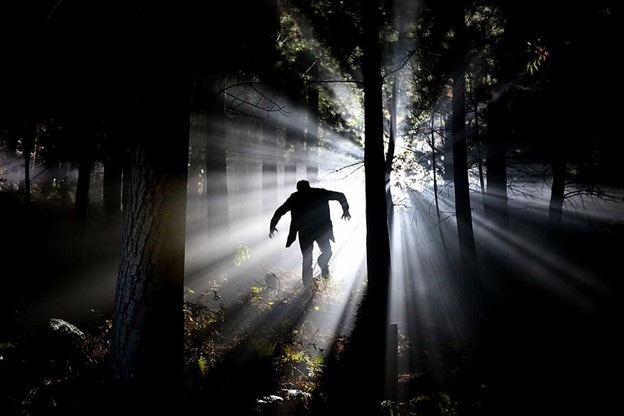Exposing the Hypocrisy of “Anti-Greenwashing” Campaigns
There is a lot of money to be made by portraying big companies as evil.
When a law firm offers a “tipline” in a prominent place on their website, you know they’re looking for new “bad guys” to target. Hagens Berman is no exception. Here is their latest quarry:
Hagens Berman has filed a class action lawsuit against Proctor & Gamble (P&G), alleging that the company’s Charmin brand of toilet paper is selling a product that is not as environmentally friendly as its product packaging suggests. The firm claims P&G is misleading its customers into paying more for Charmin than they would have otherwise. This is illegal under the US Federal Trade Commission Act.
The case centers around P&G’s marketing mantra, “Protect, grow, restore: Charmin keeps forests as forests.” The lawsuit alleges, among other things1, that P&G’s claim to grow and restore forests is false because P&G’s suppliers convert forests into “monoculture tree crops” and thus create “biodiversity-deficient Frankenforests.” Further, the lawsuit argues P&G’s claim to protect forests is false because the company uses not only pulp from suppliers certified by the Forest Stewardship Council (FSC) but also pulp from suppliers that use other certification systems. These competing systems allow clearcutting.
Hagens Berman’s “Frankenforest” allegation about as true as it sounds. Canadian forestry companies do clearcut and replant boreal forests, but planting is just part of the reforestation process. The planted trees (themselves not “Frankenseedlings” but native species grown from locally collected seed) are soon joined by natural regeneration. Therefore, the resulting forests have a species composition similar if not identical to naturally regenerated forests.
The second allegation is misleading too. Yes, P&G uses more than one certification system. However, what the lawsuit fails to mention is that FSC also allows clearcutting, and that there are legitimate silvicultural reasons for doing so.
In short, a lawsuit arguing that Proctor & Gamble is making false and misleading claims is itself is based on false and misleading claims. The law firm is recruiting case participants by appealing to their sense of justice – and dangling a potential payout. What the firm fails to mention is that most of the payout will go to its own lawyers.
Who is “preying on its customers for profit” now?
Caught in the Minutiae
The case is laughable, but also disquieting. Like many legal firms that specialize in class action lawsuits, Hagens Berman operates on a contingency fee basis, meaning they don’t bill their clients unless they win. This means the firm must believe it has a good chance of success, despite the case’s many ludicrous claims.
Key to the case appears to be P&G’s claims that the Charmin “uses only pulp certified by the Forest Stewardship Council” (FSC). However, the product packaging uses the “FSC Mixed Sources” logo. “Mixed sources” means that only a portion of a product’s raw materials come from FSC-certified forests, while the rest is “controlled wood” that meets FSC’s minimum sustainability standard. Therefore, saying Charmin uses “only FSC pulp” is inherently contradictory.
The copywriters were likely trying to say, “Every package of Charmin toilet paper bears the FSC logo; this means our products contain material from FSC-certified forests and other controlled sources.” However, by over-simplifying their message, they left it open for re-interpretation.
This relatively minor over-simplification could cost Proctor & Gamble a lot of money. The US Federal Trade Commission periodically files lawsuits against firms that have claims the Commission believes are misleading. These lawsuits often request fines of US $2-3 million. Hagens Berman’s class action settlements (at least the ones they advertise on their website) are bigger: typically, they run in the millions or tens of millions.
Navigating the Green Marketing Minefield
Designing green marketing campaigns is tricky. To attract and keep consumers’ attention (at least long enough to make split-second purchasing decisions), messaging must be simple and interesting. Yet, to avoid being targeted by anti-greenwashing lawsuits, messaging must also be scientifically precise. Unfortunately, as environmental issues can be quite complex, it being both succinct and precise can be difficult.
To add to the challenge, there are often several degrees of separation between the people closest to the environmental impacts of a product (i.e., foresters and loggers) and the people crafting the messages (i.e., marketing executives in consumer products companies). Marketers have a deep understanding of their products, their customers, and their craft. It’s a lot to ask of them to be experts in ecology and logging operations as well.
In addition to keeping abreast of environmental issues, marketers must also keep up with the misinformation landscape. Responding to anti-forestry messaging can be like playing a game of Whac-A-Mole. The Hagens Berman lawsuit showcases a good example: in response to industry messaging that it does replant (and therefore doesn’t “deforest”), the ENGO community flipped the script and announced, “Tree planting creates monocultures.”
An Opportunity for “Greenwash Hackers”
Given all the work that goes into producing environmentally friendly products and obtaining sustainability certification, it is frustrating to see a well-meaning company get caught up in a court case that might have been avoided by changing a few words in a marketing blurb.
Organizations hire “white hat” tech hackers to search their computer systems for security flaws, to protect themselves from hacker attacks. Could these same organizations also benefit from having “greenwash hackers” examine their marketing materials for vulnerabilities? I believe they could. Although anti-greenwashing campaigns are not done with the same nefarious intent as computer system hacks, they can nevertheless be disruptive.
Forest products companies and their industry partners are not inherently “bad guys.” However, the ENGOs and class-action law firms that portray them as such are not likely to relinquish their roles as watchdogs. The best offence is a good defence: eliminate marketing misspeak, and avoid being targeted.
How Accurate Are Hagens Berman’s Claims?
“Charmin relies on suppliers who harvest using industry logging practices such as clear cutting and burning of Canada’s boreal forest.”
Clearcutting: Canadian forestry practices do include clearcutting; however, in the boreal forest, there are good reasons for doing so: it enables light-loving tree species to regenerate quickly, and mimics the patterns of natural disturbance (such as wildfire) in the boreal ecosystem. To further mimic natural patterns, foresters leave reserves of standing trees inside the cutblock to provide for wildlife habitat.
Burning: Roadside slash (tree debris, such as branches and stumps) is piled and burned, in order to reduce wildfire risk and bolster reforestation efforts.
“Charmin suppliers are converting lush, dense, old-growth forests into monoculture tree crops or ‘plantations.’ P&G’s suppliers also spray chemical herbicides…to intentionally eliminate all growth other than just a handful of tree species most valuable for logging. These Frankenforests degrade overall forest health, reduce biodiversity and alter the boreal forest’s unique structure. Moreover these Frankenforests have exponentially less carbon storage capability.”
“Lush, dense, old-growth”: Very few boreal forests live to become “old.” Wildfires occur every 50-100 years in drier western Canadian boreal forests and every 100-200 years in the wetter eastern Canadian boreal forests. Boreal forests are rarely “lush” or “dense,” either. As they endure harsh winters and have short growing seasons, they tend to have small trees and sparse understory vegetation (at least relative to the west coast).
“Monocultures”: Canadian forestry companies do not grow “monocultures” or convert natural forests to “plantations.” Forestry companies regrow the types of forests that existed before logging; since we primarily harvest softwood species, we seek to grow native softwood species back.
Planting trees helps speed up the reforestation process, but is only a part of it. The planted trees are joined by naturally regenerated trees of the same species that existed before logging.
Limited herbicide application may be permitted in areas that are covered by heavy brush, to ensure forests regenerate as forests.
Carbon sequestration: Young boreal forests actually do sequester carbon. Although they sequester very little in their first years of life, by about age 30, they absorb carbon much more quickly than mature boreal forests do. Having different ages of forests across a landscape maximizes its carbon sequestration potential.
“…widespread deforestation practices…”
Deforestation is the permanent conversion of forested land to other uses. Logging is not deforestation. Aaargh!







The ultimate irony is that the law doesn't work both ways... ENGOs can make claims without the same burden of proof required of Industry. When the law was passed, it was intentionally watered down to allow this.... frustrating but not surprising.
Excellent article as always Alice. You do a great job of putting the brutal facts out there! Keep up the great work.
Right on!